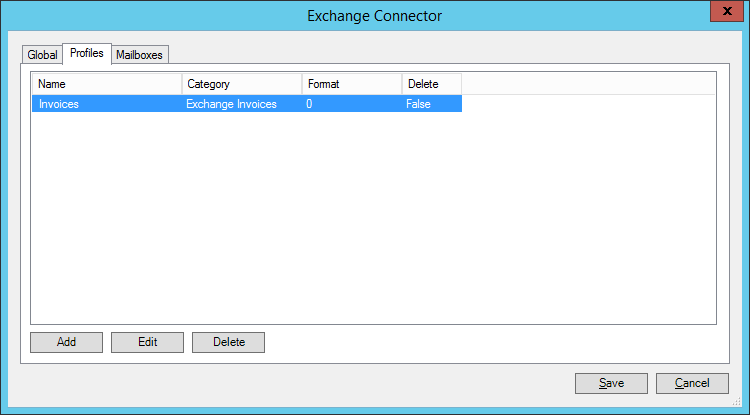
|
Profiles |
Scroll |
After defining the global settings, switch to the Profiles tab. This is where you define how e-mails are saved to a category of your choosing in Thereforeā¢. In this scenario, this let's assume the connector is used to automatically save all e-mails related to invoices sent to finance department employees. These users move invoice-related e-mails from their Inbox to a folder named Invoices in their mailboxes. From here they are picked up and saved by the connector. Only the mailboxes of finance department employees are monitored in this scenario.
The e-mails will be saved to the category pictured below. In certain scenarios, it is recommended to have a unique identifier field for each e-mail saved. For example, this would be useful in an Exchange Online environment which does not support journaling. If the same e-mail is sent to 10 mailboxes, the connector will only save one copy if it sees the same unique identifier for the same e-mail in other mailboxes. In the example below, we are using the Hash as the unique identifier.
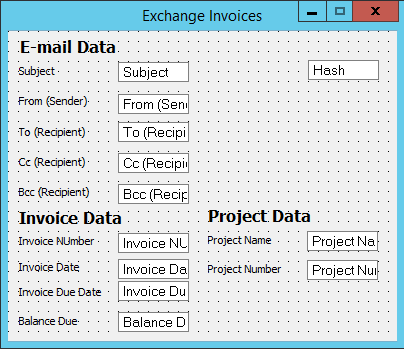
1.On the Profiles tab, click Add to open the profile configuration dialog. On the General tab, enter the profile name, the message format of the e-mails to be saved, and select the category in which to save.
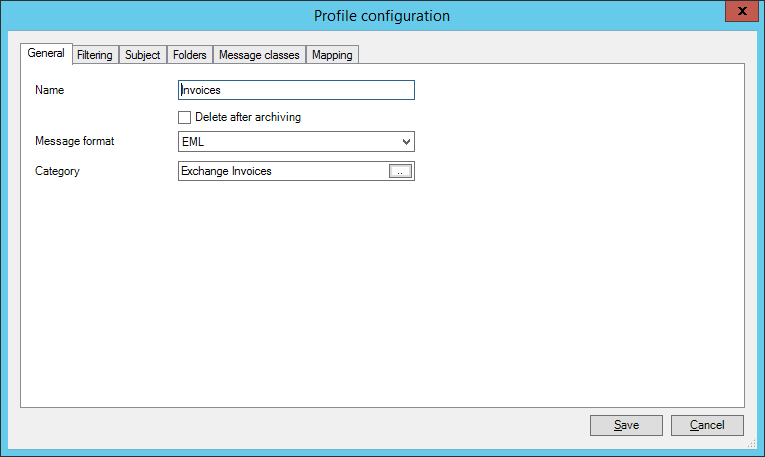
2.Switch to the Filtering tab. Define the filters needed to make sure only the right e-mails are saved. For example, let's define a condition so only e-mails whose subject starts with Invoice are saved. Right-click on AND, then Add field > Subject. Open the Condition drop-down list and select StartsWith. Enter Invoice as the value.
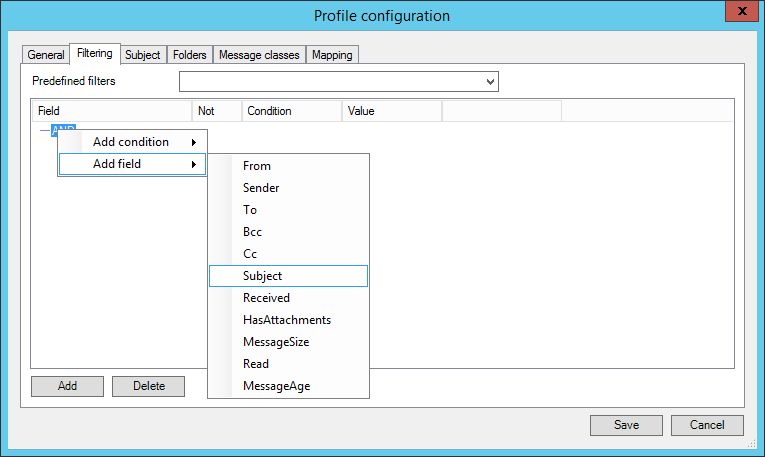
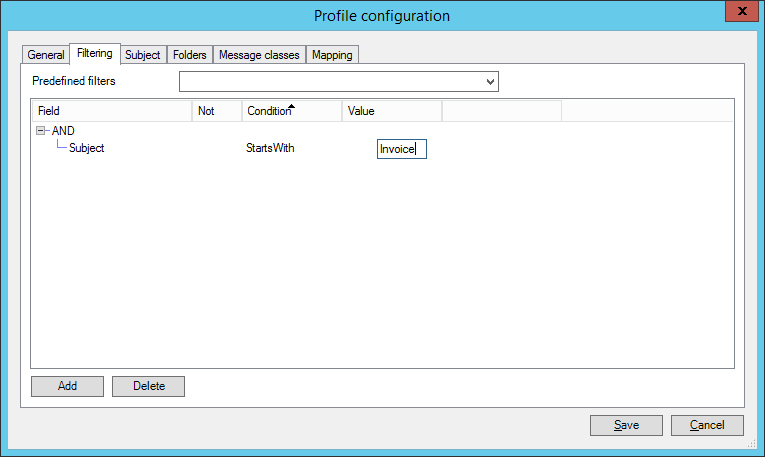
|
For more precise filtering, you can enter more fields by right-clicking the condition and selecting Add Field, or enter another AND/OR condition by selecting Add condition. |
3.The use of the Subject tab is optional. You can use it if you have a long list of subjects that should be skipped or included in the filtering, as entering the subjects here is faster than creating many subject conditions in the Filtering tab. Select whether the subjects in the list should be skipped or included. Wildcards can also be used.
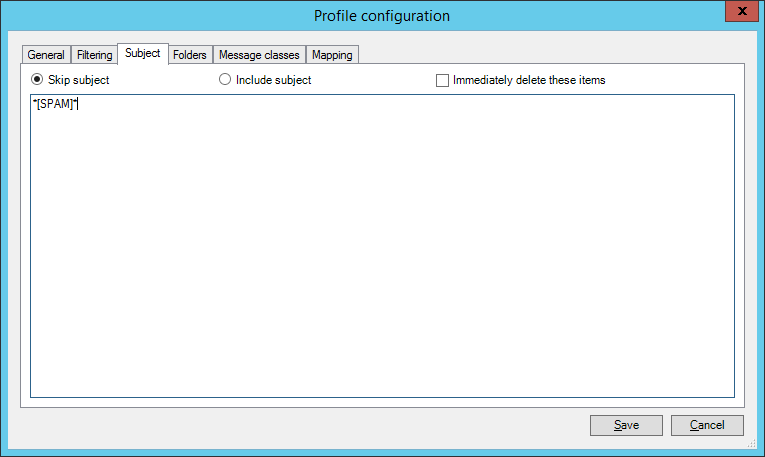
4.Switch to the Folders tab and click Add. Select Include for the Action, and enter the name of the folder that should be monitored. In this example, we chose the Invoices folder, a sub-folder of the Inbox. We also chose to skip other folders such as Drafts, Sent Items, Deleted Items, and Junk Email.
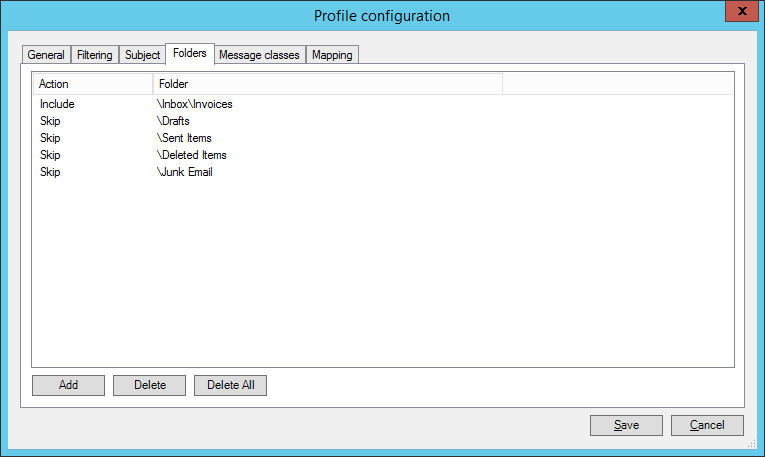
|
Enter the folder names separated by backslashes in hierarchical order. The following example would be entered as \Inbox\Contracts\Expired: -Inbox --Contracts ---Expired |
5.In the Message classes tab, the default value is IPM.NOTE. Add any other message classes the connector should save. See this Microsoft article for more information on item types and message classes.
6.Switch to the Mapping tab. This is where you can map fields in a Thereforeā¢ category to message properties from Exchange. Click Add > Add field to add a field from this profile's Thereforeā¢ category. Then open the drop-down list in the Exchange column and select which property should be mapped to the Thereforeā¢ field you chose. Finally, select what should happen if a value is truncated (truncate or raise error).
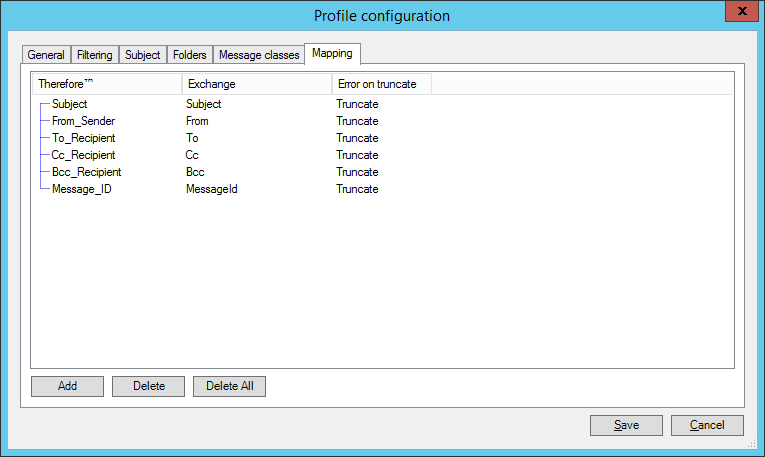
7.Click Save once done. The profile is now listed in the Profiles tab.
